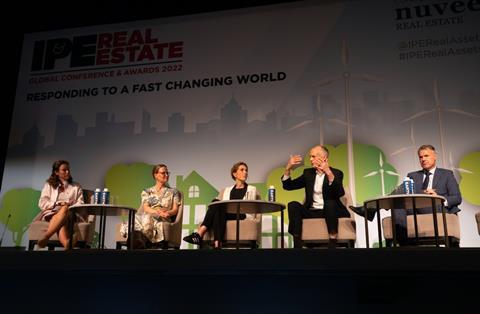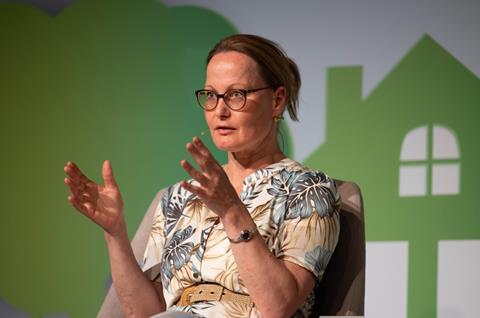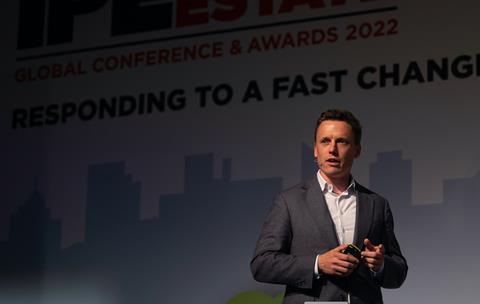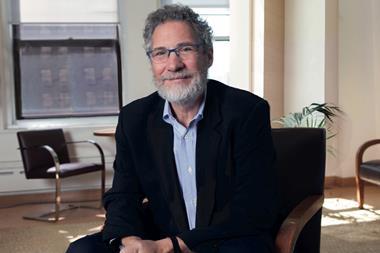Institutional real estate investors are “on the cusp” of a major push into social impact investing and closer engagement with the public sector and communities, delegates heard at the IPE Real Estate Global Conference & Awards last week.
“In the Netherlands you are pioneers in this space,” said Peter Hobbs, managing director of private markets at Bfinance, to the audience in Amsterdam. “But I do think impact investing in real estate is where ESG was 10 years ago.”
In the coming decade, the move into social impact by real estate investors would be “as profound as in equities going from active to passive”, he said. “At the moment, most investors are making individual investments in affordable housing or revitalisation, healthcare, which is great, but they’re not looking at the overall portfolio in terms of impact. I think that is on the agenda in the coming decade.”

Hobbs was speaking on a social-impact panel, moderated by Sophie van Oosterom, global head of real estate at Schroders Capital, who explained that investments in social housing in the UK had outperformed the broader real estate market and with less volatility. Van Oosterom also asked the panel, whether financial returns should come at the expense of social impact objectives.
Marleen Bosma, director of strategic business development at Bouwinvest Real Estate Investors, which invests on behalf of bpfBouw pension fund and other investors, was surprised at the level of returns shown to be generated by some social impact investments in van Oosterom’s presentation.

“If you want to make social impact, why do we need to make a return of 15%,” she asked, adding that there was a balance to be struck between “giving up some return” in return for “a lower risk profile”.
But Hobbs said this thinking contrasted with that of the institutional investors he advised in the UK. “All the investors we’ve worked with in this space have said we can’t forego any financial return,” he said. “They are fiduciaries. What they want to do is create an impact alongside a financial return, but they can’t forego the financial return.”
Hobbs said there were many impact investing strategies that were offering projected returns between 5% and 8%, which would appeal to core real estate investors. “That’s where most social impact strategies seem to fit, and so an investor doesn’t need to lose a return and they get all those benefits of diversification, long duration, government-backed, CPI-linkages and so on.”
The discussion was held on the same day that the Dutch housing minister Hugo de Jonge announced plans to increase rent controls in the private residential sector to keep rents affordable for incomes that are ineligible for social housing.
Under De Jonge’s proposal, which sees the maximum rent in the regulated sector increase from €763 to €1,250 a month, about 90% of rental housing in the country would become subject to rental controls.
Bosma told the conference that the proposals “reflect the urgency of the situation we are in, which is that many people cannot afford to rent a house”.
Asked whether she was concerned about the potential negative impact for Dutch pension funds, which are the largest single group of investors in residential real estate in the country, she said: “If you want to make impact and if you want to invest in that social and low-mid-rental-income housing part, for sure that will be somewhat lower compared with the higher-rental side of that.”
Bosma added that if large investors did not “act on the affordability issue within the housing space”, it would have a negative knock-on effects for other parts of real estate portfolios, because people will “not able to live in their cities any more or near their professions, schools, hospitals, etcetera”. She said: “It will have an impact on the other sectors.”
Hans Op ‘t Veld, principal director of responsible investment at PGGM, said it could be in the interest of investors to “reduce the return perhaps in the short run” to achieve a more sustainable long-term return.
He said government intervention – such as that seen in Berlin recently – is a “clear example of what happens if you forget about the social aspect of it [and] just drive up rents and all of a sudden people are going to turn against you”. He said: “We see that more often.”
Speaking separately, Henk Groot, CIO of Pensioenfonds Detailhandel, told IPE Real Assets that the new proposals were unlikely to be a reason to reduce investments in Dutch housing. “On the one hand, we want to maximise our returns, but on the other we want to do it in a responsible way.
”If our returns on the asset class were to be a little lower as a consequence of this new regulation, I don’t think that would hinder our strategy.”
Working more closely with public sector and communities
At the start of the day, Mike Sales, CEO of real assets at Nuveen, said that, “by combing mixed-use with the provision of affordability, real estate schemes can play a role in tackling in some of the challenges in social equality that we’ve seen across global developed world”.
Sales said this was particularly “stark in the UK, where the real estate investment can be part of the levelling-up solution through impactful investment into buildings that address community needs such as affordable housing, education, healthcare facilties and perhaps most importantly a regeneration of neglected high streets.”
And it became clear during the conference that real estate investors will need to work increasingly with the public sector and communities if they are going to be successful in investing in major developments and regneration projects.

Alex Knapp, European CIO at Hines, explained how COVID-19 pandemic had brought about a “renewed focus on authenticity” and this illustrated why real estate investors needed to develop in a way that retained the feel of the existing surrounding and local activity when embarking on the art of placemaking.
“One of the pitfalls that real estate developers have fallen into historically is trying control every last detail,” he said. “When you do that you end up with places… that feel like they’re manufactured… we are trying to move beyond that.”
Knapp, who presented and moderated a session on placemaking, asked: “Why don’t we make more places? Well, there’s an obvious reason… working with public sector and working with the public can be challenging – especially when you are working on bigger projects in the public eye.”
He said it was unfortunate but a reality that “the starting position for everyone is… one of mistrust when it comes to a big project”.
He added: “This is another area that takes time: building trust and figuring out what you can deliver back to the city and the residents in concrete terms is critical. Every time you try to short circuit this it doesn’t work.”
Asked what the industry could do to improve the situation, Lisette van Doorn, European CEO of the Urban Land Institute, suggested that “it probably starts with transparency”.
She said that public-private relationships needed to go a period of building trust, comparable to that which took place between real estate investors and investment managers over the past decade since the global financial crisis.
“I think you’ve seen that process with your investors as well,” she said. “I think that process needs to happen with the public sector as well.”

For instance, it used to be rare for pension funds to take on development risk, but in more recent years it has become more acceptable and has made investment in development more long-term in nature.
“The sooner that long-term capital is involved the better it is, but I think a lot of the memory of the public-sector side still faces that short-term development approach,” she said. “It takes a long time to rebuild that trust.”























